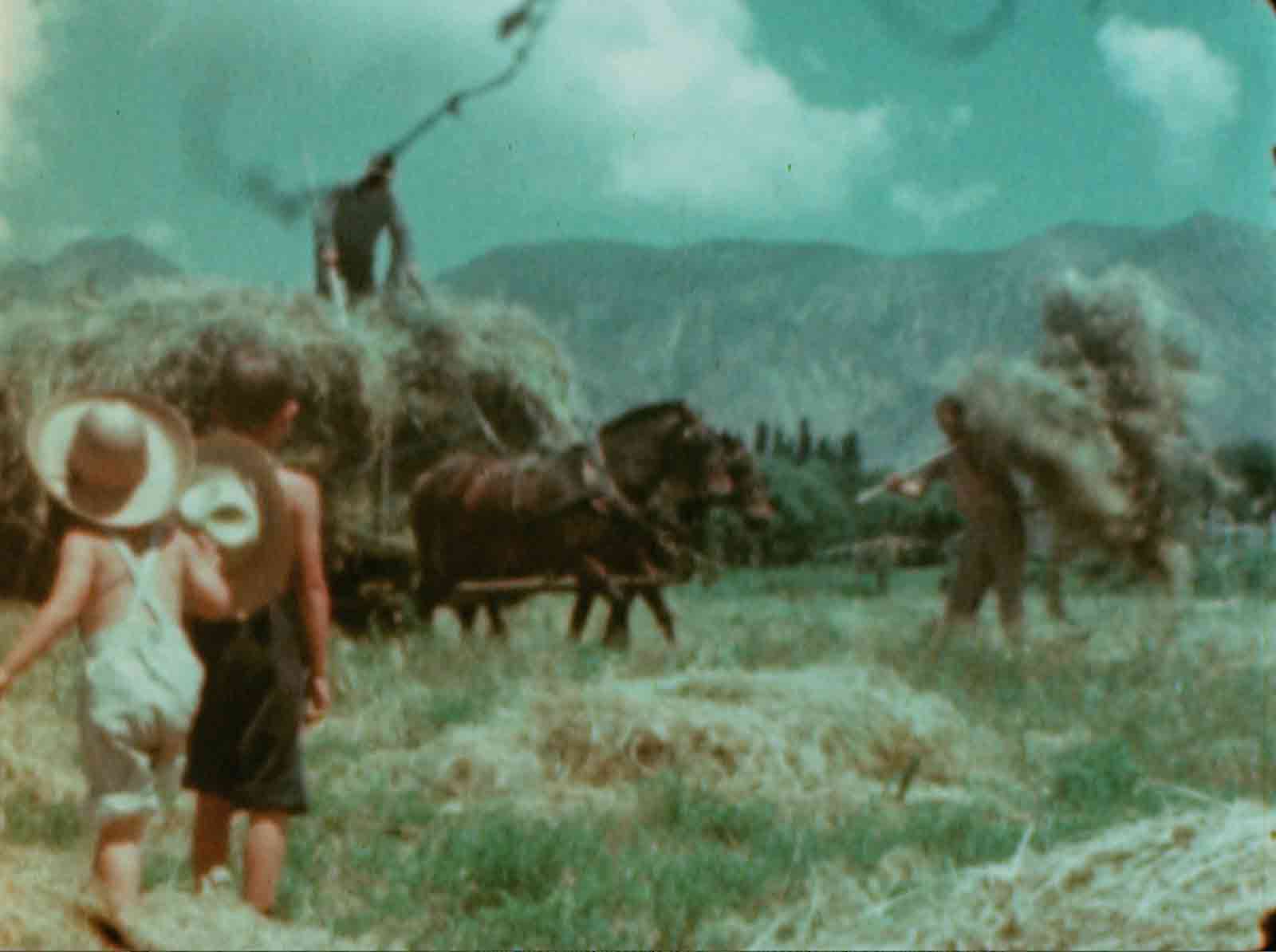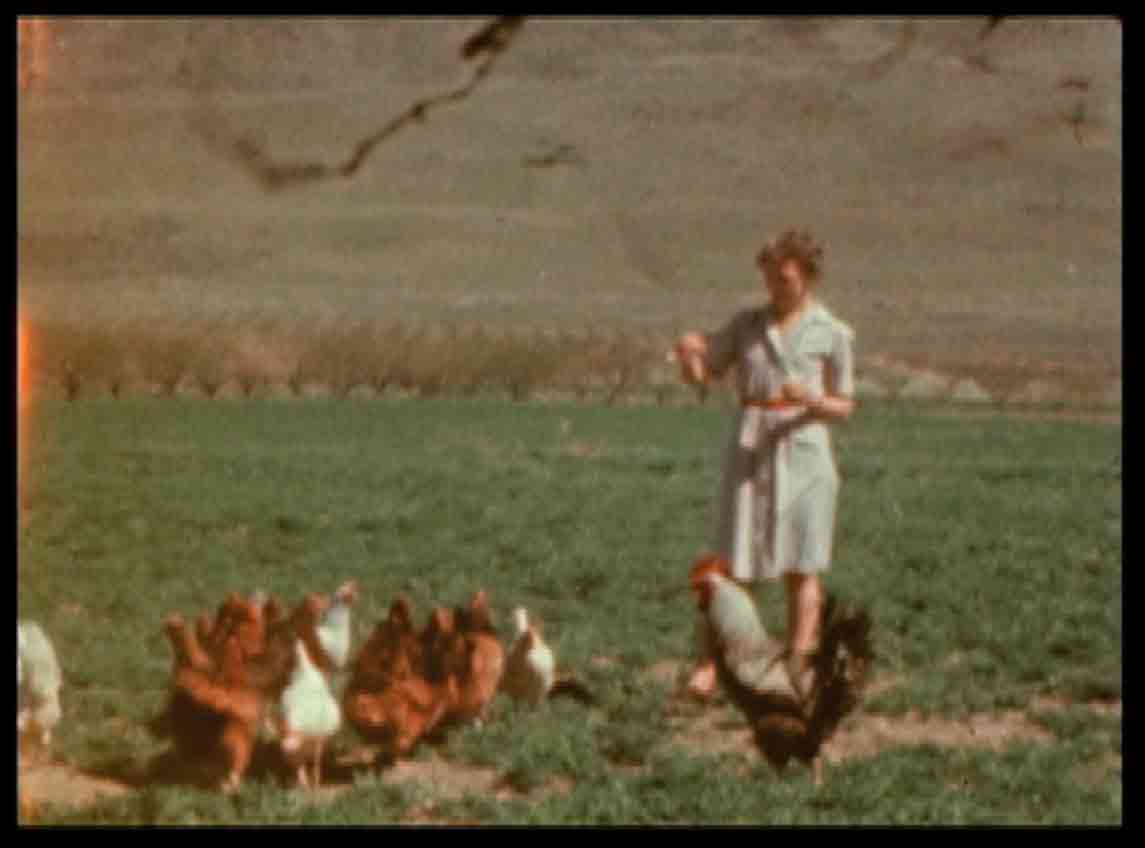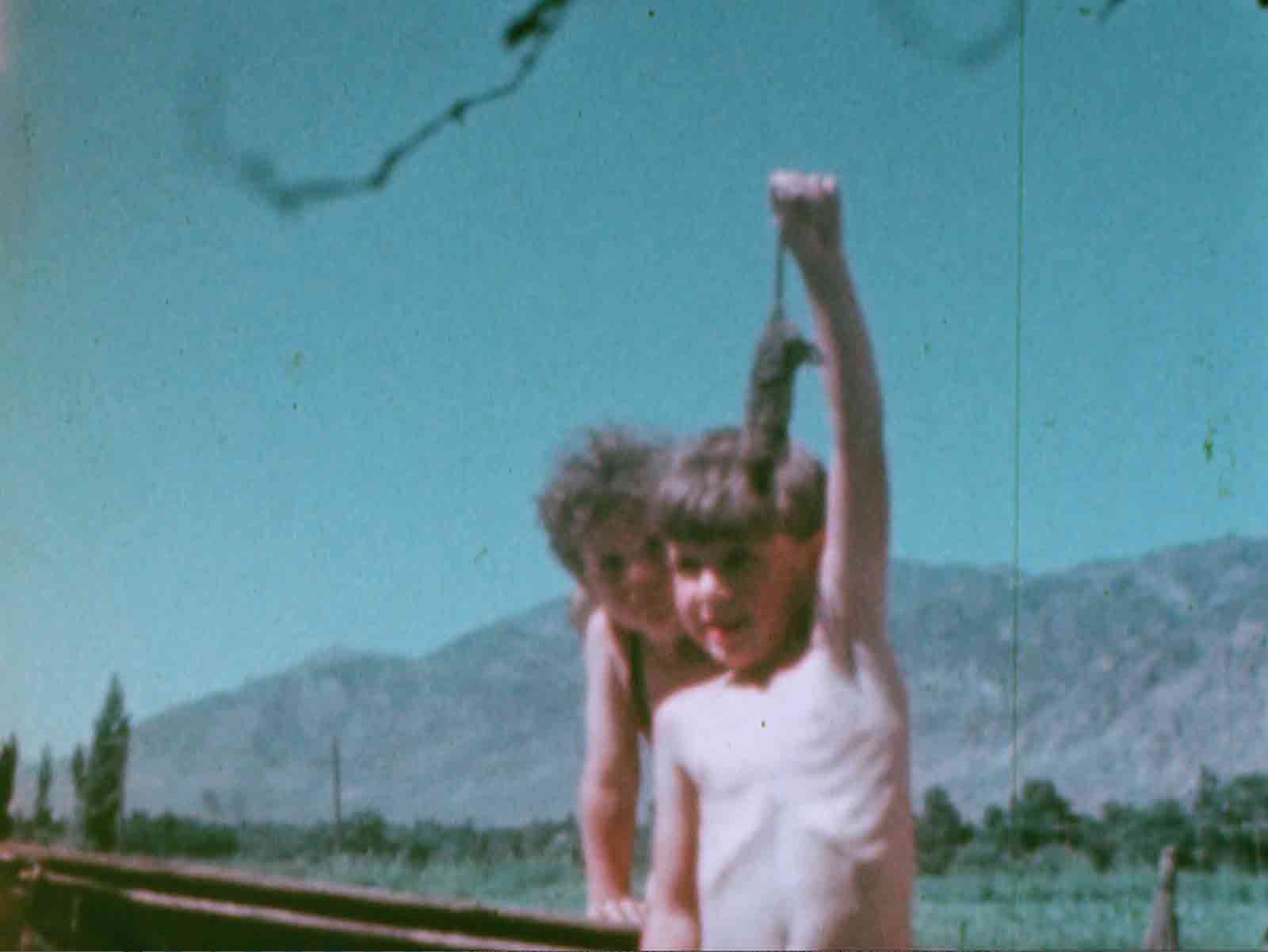My father, Dr. Ernst F. Lyon, immigrated from Hitler’s Germany in 1934. When our country entered World War II, he volunteered and was made a second lieutenant, a doctor in the United States Army. In 1944, he was stationed at the Bushnell General Military Hospital in Brigham City, Utah, leaving behind in Queens his wife, Beba, and two small children, Leonard, age seven, and myself, age three.
Ernst was also an amateur photographer and filmmaker. He carried an 8mm camera West and filmed everything, including the arrival by train of my mother, who’d made a short visit to see him. When, growing up, I would say I remembered something from the West, like finding a railroad spike on the side of a mountain, my parents would say, “You don’t remember that, you remember the film.” Dad liked to project his films on a pull-down screen in our apartment.
In the summer of 1944, my mother, my brother, and I took the train from New York City to Utah, where my father picked us up at the closest station, and drove us to a small farm house in Perry, Utah. Leonard would enter school there, going to the second and third grades. I, a city boy who had never known anything but an apartment on Metropolitan Avenue, with a small park and sandbox across the street, would quickly morph from a city- to a country-boy.
You can see this happen in his films, some of which I made into a movie years after my father’s death called “Childhood.” There is my mother, born under the Czar of Russia, the last of ten children, who reached America at fifteen and who had never known much outside of New York City. In the film, she is wearing a print summer dress and throwing corn to chickens outside the little farm house where we lived by the only road in town. Beyond her lies a valley filled with the pink blossoms of peach trees in full bloom and, beyond that, right past the large irrigated fields, the Wasatch Mountains, still covered with snow, majestically crossing the spring skyline.
By the end of our first season in Utah, I was a shirtless little boy in overalls, walking without shoes across a stubble field, as my father tried to pitch hay onto a huge heap on a wagon being pulled across the field by a Buick, of all things. In one film scene, I lose a sneaker on a very hot day as I scramble to catch up with my brother and a friend who are climbing up a ridge into the mountains. My father must have dropped to his knees to film me, a three year-old, determined and stumbling, climbing and crawling up the steep incline in the dry, summer heat.
When the war ended, our year in paradise came to an end. My father put us on a train where I shared the upper bunk with my brother while he drove his two-door Chevy coup back to New York City. The rest of his films show me as a child in Kew Gardens, skating and playing war games in the woods, then later at a camp in the Adirondacks, where I was sent with my brother from 1949 until 1955.
But I could never shake my memory of Perry. As I became a teenager, I would pester my parents about sending me to camp. I didn’t want to go. “I would rather spend two weeks in the West” was how I worded my oft-repeated complaint.
Years later, in 1968, I was photographing inside the Texas prisons and living in Houston when I went to visit and photograph some artist friends of mine from Park Place Gallery who had created Libra, a commune on 400 acres in southern Colorado. They were living in geodesic domes they had made for themselves high in the San Luis Mountains. I was back in the West.
When I asked a woman I was then dating in Manhattan, an editor at the publisher Dutton, to go with me to New Mexico, she said, “What would I do out there, bake bread?” In 1970, I bought two and half acres of irrigated land in the Rio Grande Valley, north of Albuquerque, and began to build a home and raise a family. My mother’s brother, Lazaar, a founder of the Lawyer’s Guild, said, “What are you doing out there in the middle of no place?”
Advertisement
Although the land has grown to eight acres with an orchard of fruit trees my wife Nancy and I planted, now forty years old, it is a question I still ask myself. Three of my children were born here. Last year, we canned peaches. When we left Perry in 1945, my mother had made so many jars of preserved peaches that we ate them for years, back in Queens.
Among my father’s films are scenes of road trips in the Adirondack mountains. A child in shorts, I pick wild flowers at the edge of the road. Then Dad, steps out from the shadows, a string of bass hanging from a line, as he lifts his hat in triumph and bows to the camera. Then my mother turns the camera off. As soon as I began life in New Mexico, I began to fish.
As I write this, I am seventy-seven years old, and my parents have been dead for over forty years. There is a wonderful trout river in the northwest corner of Utah called the Green. It flows from beneath the Flaming Gorge Dam. Last week, Nancy and I went there to fish. The Green emerges from beneath the dam, then flows uninterrupted to Moab, where it meets the Colorado. It is the same river and canyon that the pioneering geologist and explorer General John Wesley Powell rafted down in 1869, on his way to the Grand Canyon. When we were done fishing, Nancy and I drove from Flaming Gorge back to Salt Lake City. Perry, Utah, is a very small town fifty-five miles north of Salt Lake, past Ogden and just south of Brigham City. These cities and towns are all in a great valley that stretches north along the eastern edge of the Great Salt Lake.
Outside of Ogden Nancy left the expressway to get onto Route 89 North. We were close to Perry. I could see an arm of the lake on our left, orchards mixed with houses on our right. “Gee,” I said, “I have no memory of the lake.”
Then I started staring at the mountain that was sloping down into fields, only a mile from our car. A great orchard lay beneath it. The strangest feeling overcame me. It was as if a ghost had appeared outside the car. This was a place I had dreamed of my whole life and it was now coming into view. I kept staring at the mountain. “That’s the ridge I’m climbing up in the film!” I exclaimed.
A large farm stand beside the road was advertising peaches and cherries. We were in Perry.
Danny Lyon’s film Childhood can be watched in full here. The title of this essay, “Home Is Where the Heart Is,” is in honor of Lyon’s late close friend, Daniel Seymour, for his 1971 film of the same name, produced by Sensory Overload.








